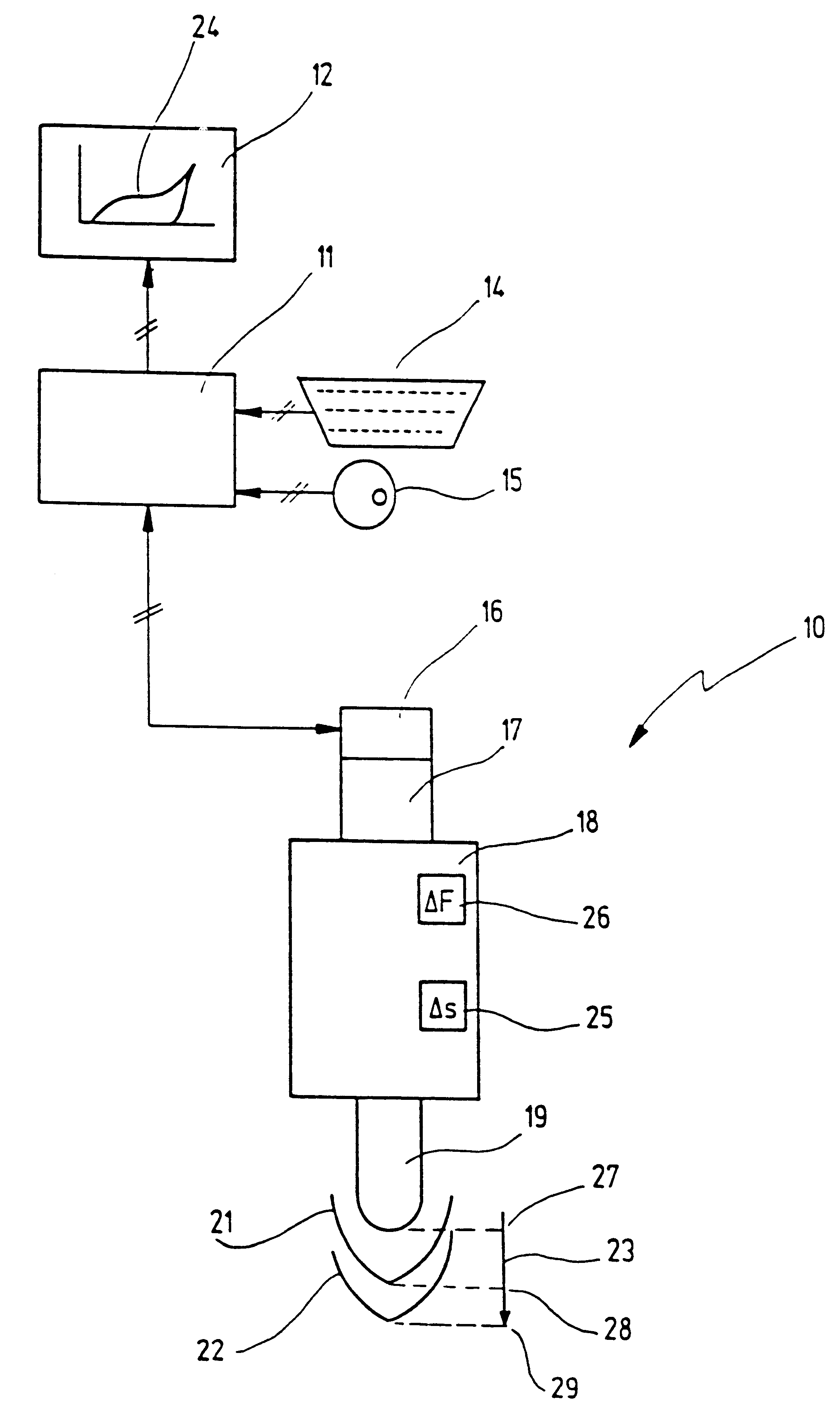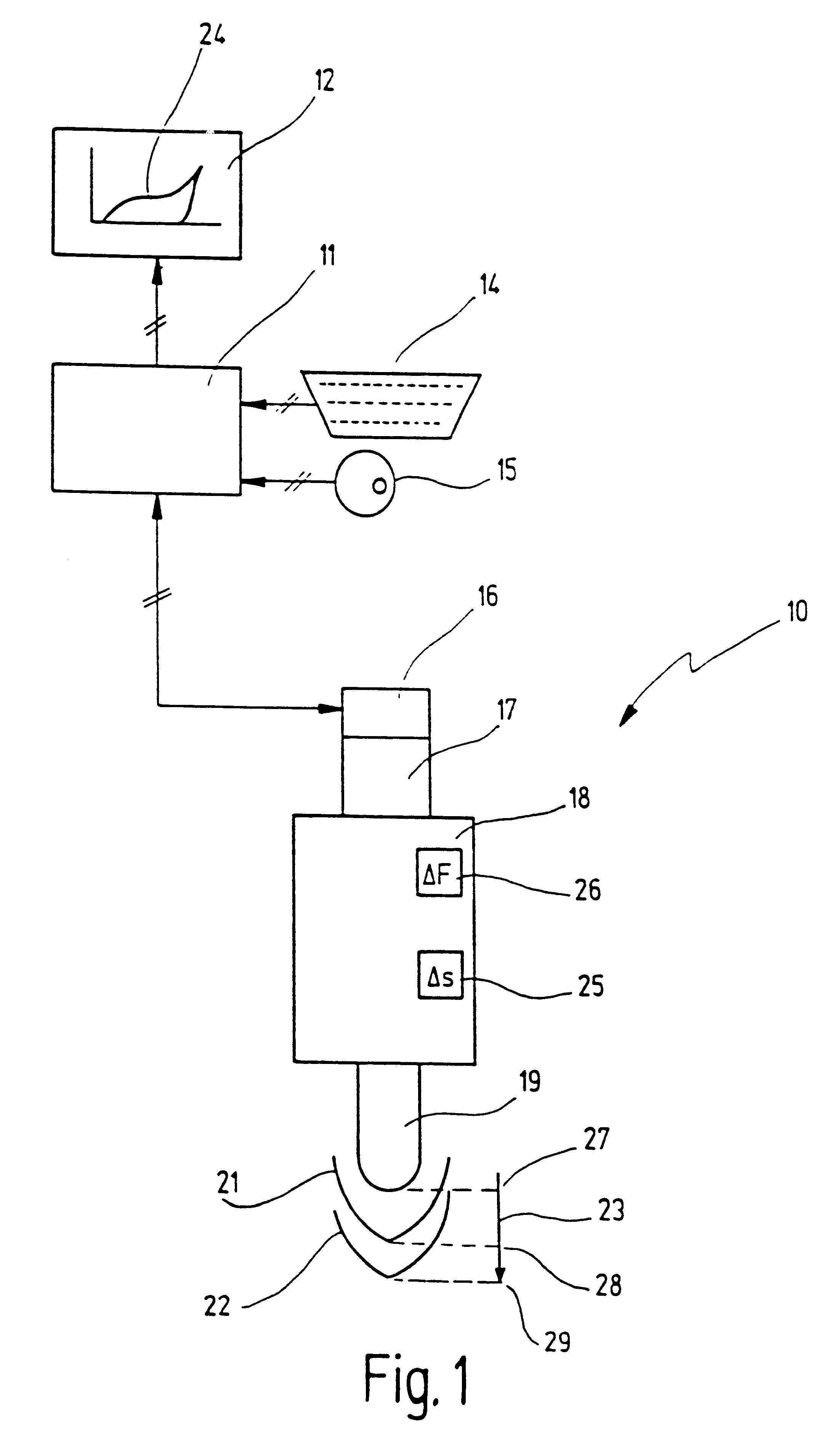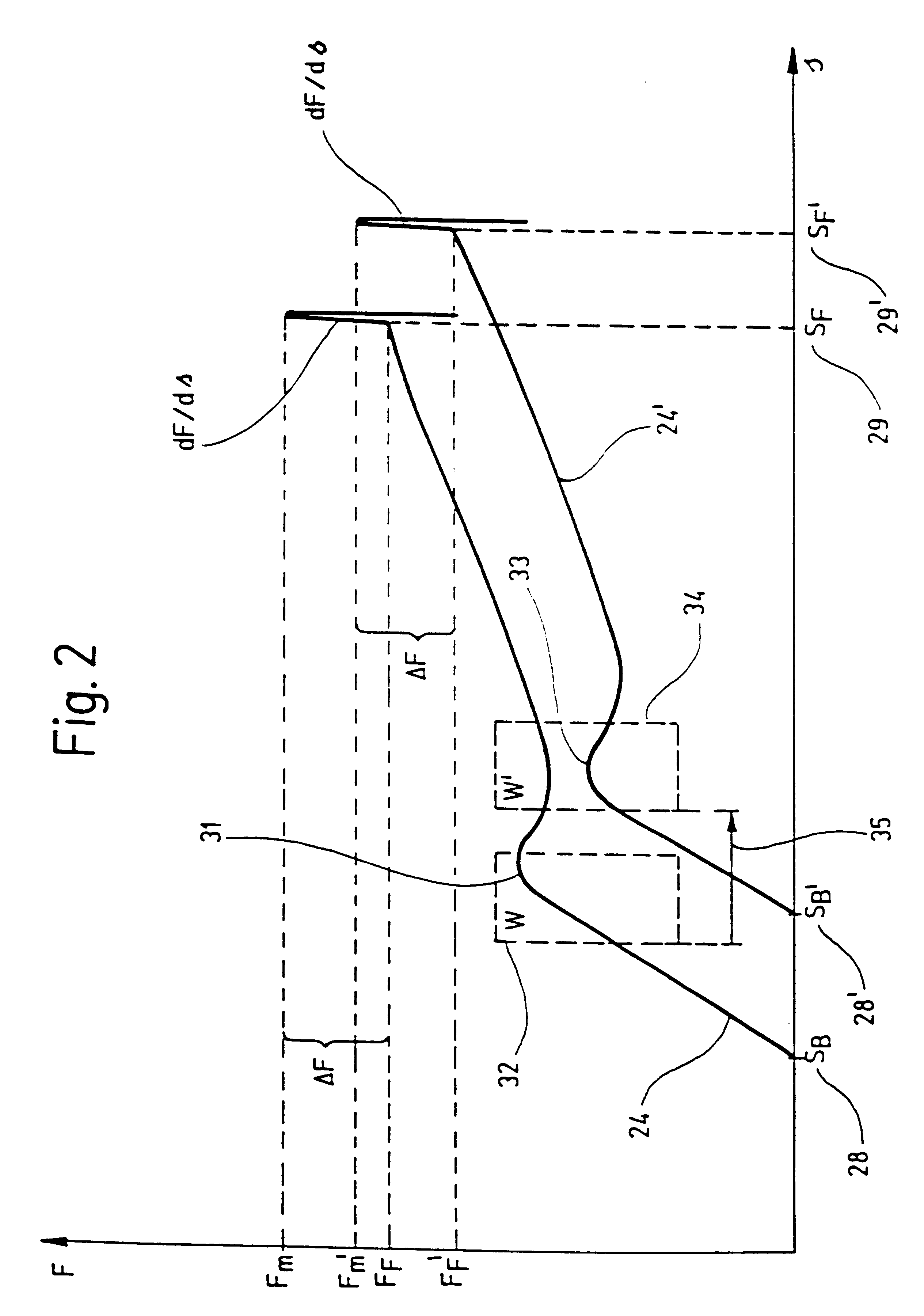Method for operating an electric press
a technology of electric presses and presses, applied in the field of electric presses, can solve the problems of unreliable determination of the end position only from the onset of pressing, waste of resources, and incorrect joining of workpieces
- Summary
- Abstract
- Description
- Claims
- Application Information
AI Technical Summary
Benefits of technology
Problems solved by technology
Method used
Image
Examples
Embodiment Construction
In FIG. 1, 10 generally designates an electric press which is operated via a control system indicated at 11. A screen 12, a keyboard 14, and an electronic handwheel 15 are connected to control system 11.
Also connected to control system 11 is an interface 16 of electric press 10 which makes possible control and monitoring of the pressing operations, as will be described later.
Electric press 10 has an electric motor 17 which is mounted on a housing 18. A schematically indicated press ram 19, which is actuated via electric motor 17, projects downward out of housing 18.
Schematically indicated below electric press 10 are two workpieces 21 and 22 which are to be joined to one another by electric press 10, for which purpose press ram 19 performs a working stroke indicated at 23.
The profile for compressive force over displacement which thereby results is displayed in real time on screen 12 as curve 24, for which purpose a displacement sensor 25 and a force sensor 26 are provided in electric...
PUM
| Property | Measurement | Unit |
|---|---|---|
| compression force | aaaaa | aaaaa |
| force | aaaaa | aaaaa |
| compressive force | aaaaa | aaaaa |
Abstract
Description
Claims
Application Information
 Login to View More
Login to View More - R&D
- Intellectual Property
- Life Sciences
- Materials
- Tech Scout
- Unparalleled Data Quality
- Higher Quality Content
- 60% Fewer Hallucinations
Browse by: Latest US Patents, China's latest patents, Technical Efficacy Thesaurus, Application Domain, Technology Topic, Popular Technical Reports.
© 2025 PatSnap. All rights reserved.Legal|Privacy policy|Modern Slavery Act Transparency Statement|Sitemap|About US| Contact US: help@patsnap.com



